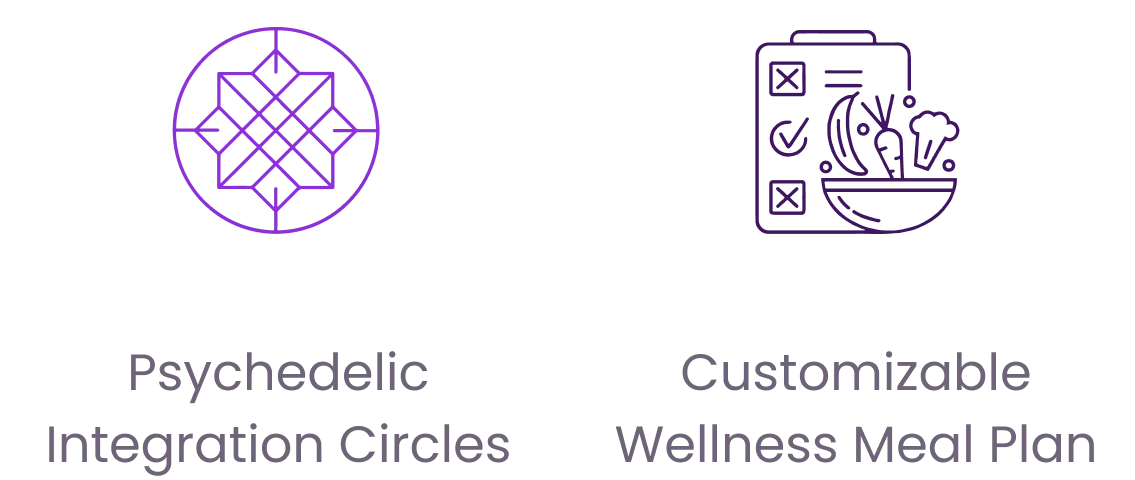In the evolving field of psychedelic-assisted therapy, the role of touch has become a focal point of discussion and development. The recent technical report, "Evolving Guidelines for the Use of Touch During a Clinical Trial of Group Psilocybin-Assisted Therapy," provides valuable insights into how touch can be ethically and supportively integrated into therapeutic sessions. This blog post explores the importance of touch in therapy, particularly in non-ordinary states induced by psychedelics, while emphasizing the paramount importance of consent.
The Essential Role of Touch in Human Connection
Touch is one of the most fundamental forms of human connection. From infancy, touch helps us bond with caregivers and communicate emotions. It has the power to convey empathy, support, and safety, often more effectively than words. In therapeutic contexts, touch can ground individuals, helping them navigate intense emotional and physical experiences.
Psychedelic Therapy and the Use of Touch
Psychedelic therapy, especially with substances like psilocybin, often brings participants into deeply altered states of consciousness. These non-ordinary states can amplify emotions and physical sensations, making the environment and interactions within the session critically important. Some practitioners believe that, when used carefully and ethically, touch can be a supportive and even necessary component of the therapeutic process.
Evolving Guidelines for Ethical Touch in Therapy
The report highlights the creation and iterative development of guidelines for the use of touch in a group retreat-based format of psilocybin-assisted therapy. Initially, the guidelines aimed to create a safe and supportive environment by informing participants about the potential use of touch, respecting their preferences, and using touch only to prevent serious harm. Facilitators were trained to ask for consent and consider each participant's trauma history.
However, as the study progressed, the team encountered situations that prompted a reevaluation and refinement of these guidelines. Two instances during the third retreat demonstrated that the initial guidelines needed to be more adaptable to participants' real-time needs and experiences.
Case Studies and the Impact of Touch
In one case, a 60-year-old woman with metastatic cancer experienced chest tightness and increased blood pressure during a psilocybin session. The touch from facilitators, later described by the participant as a "lifeline," provided crucial comfort and support.
In another instance, a 50-year-old woman with metastatic cancer experienced intense physical reactions. A facilitator, trained in Reiki, used touch to help ground her, which the participant later described as "awesome" and essential for feeling supported.
Revised Guidelines and the Importance of Consent
The team revised their guidelines to better respond to participants' needs and ensure safety. These updated guidelines include:
- Using the term "reactions" instead of "preferences" for touch discussions.
- Establishing explicit safe words for participants to use.
- Incorporating practices from body-based therapies, such as draping.
- Emphasizing "considered" touch, requiring facilitators to reflect on each instance of touch.
- Conducting routine reviews of each instance of considered touch by the facilitator team.
While consent must always be at the forefront of psychedelic therapies, it is equally important to recognize that touch can play a significant role in the therapeutic process. In non-ordinary states induced by psychedelics, touch, when used ethically and with explicit consent, can enhance the sense of safety and support, facilitating deeper therapeutic experiences.
Looking Forward: The Need for Further Research
The revised guidelines represent a significant step forward, but they are not the final word. More research is needed to understand how touch in psychedelic therapy affects participants with diverse backgrounds and trauma histories. Ongoing studies will help refine these guidelines, ensuring they are both effective and ethically sound.
Conclusion
The integration of touch in psilocybin-assisted therapy holds great promise for enhancing therapeutic outcomes. However, this practice must be approached with the utmost care, prioritizing informed consent and the well-being of participants. As guidelines evolve, the focus remains on creating a safe, supportive, and empathetic environment that honors the profound nature of psychedelic experiences.
In the evolving field of psychedelic-assisted therapy, the role of touch has become a key area of focus. A recent report highlights guidelines for ethically integrating touch into therapeutic sessions, emphasizing consent and participant safety. Touch is fundamental in human connection and can ground individuals during intense experiences induced by psychedelics like psilocybin. Updated guidelines now better address participants' real-time needs, incorporating practices from body-based therapies and routine review processes. Although promising, further research is needed to refine these guidelines and ensure they are effective and ethical for diverse participants.
The integration of touch in psilocybin therapy shows promise, but care is essential. Updated guidelines emphasize safety and consent, though more research is needed for diverse participants.






















